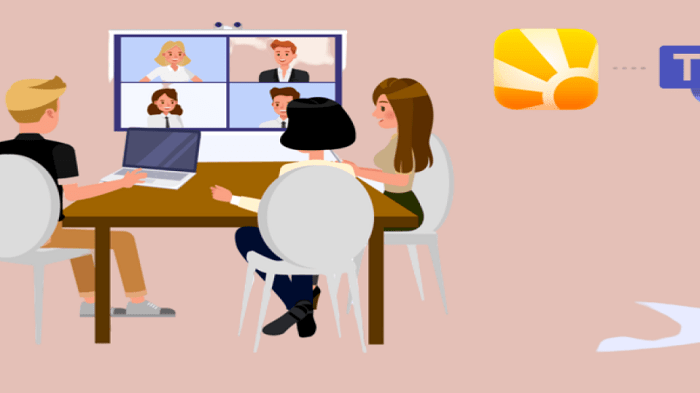5 Most Rated Benefits of Blended Learning

Among the many advantages of blended learning, we’ve explained here, the most rated benefits of Blended Learning. With the viral influence of technology and internet in today’s world, there is great need to incorporate these developments into teaching and learning. One major way of integrating technology into education and pedagogy is through blended learning.
Considering the acceptance and effect of blended learning on students performance and teachers effectiveness, one would think it is the most ideal method of innovative integration in education. Blended learning also has its disadvantages. But before we consider the most rated benefits of Blended Learning, let’s look at the definition of blended learning.
What is Blended Learning ?
Blended Learning is a mixture of the traditional classroom/Face-to-face Teaching and E-learning also know as LMS. It brings together the best of both Classroom and e-learning experience. To me, it is the best solution all-round, as it is appealing to all learning styles, circumstances, needs and demand. It blends conventional classroom learning with the flexibility of e-learning.
Blended learning greatly depends on the technical resources with which the learning knowledge is delivered, these instruments need to be up to date, decent and user-friendly in order to have a significant impact. Such tools help students learn or analyse major concepts, stay organized, show what they’ve learned, submit assignments, track accomplishments, and communicate.
Blended learning uses, let’s say a learning management system (LMS) to teach and support learning in a traditional classroom. With access to a LMS, students can acquire or obtain high-quality course materials, course calendars and assignments at any time of day.
Most Rated Benefits of Blended Learning
Some of the most rated benefits of Blended Learning for teachers and students are mentioned below:
1) Students will be more engaged using a variety of content types
The motive behind illustrated books for younger ones is very simple. A child is much less likely to sit down and read pages filled with just text.
Firstly, we take into account the understanding level of the student, and know that pictures, along side texts will make the material much more easier to comprehend.
Secondly, in the case that the material presented is easy to understand, the illustration is most times a good way to help the student grasp the information faster.
Another good way to have that effect is presenting the student with realistic examples of the theory taught.
To attain active student engagement, the blended method in learning uses the excess of different material types. Video, Voice notes and visually enhanced presentations, are embedded in a blended learning course structure, to help keep students engaged and, also, to ensure that all material is easily understood. Sometimes, that is not always the case in the environment of a physical classroom.
2) Different student, different learning style
You might be thinking “how am I supposed to account for everyone?!”. The answer is that you can’t always make everyone happy. Nonetheless, diversifying your teaching procedures is a good way to tackle the issues that arise when you offer an online course to a possibly huge amount of individuals from all over.
Blended learning integrates both environments and helps all types of students in different ways:
- Time is always an issue in a physical class: You will either be limited by the one or two hour limit, and getting all the necessary information across is sometimes a trivial job. Especially when speeding up understanding is of essence. Blended learning allows tutors/teachers to take information home and assimilate it at their own pace and time without the pressure of keeping up with the rest of the class.
- Quizzing and Testing online allows for teachers to have more time to educate in the physical classroom. It earns the teacher extra time to facilitate contact with students and answer questions, discuss concerns and ensure that everyone’s issues are being resolved.
3) Teachers can assess students trends and act accordingly
As advanced as technology may be, some things are just not possible in the physical classroom education, and that’s where the one of the most rated benefits of blended learning comes in.
Some of the many reasons that e-learning is very appealing to teachers is that it allows updating and tweaking of material on-the-go. An awesome feature that some Learning Management Systems (LMS) have to offer is Reporting.
Reporting is great because it allows for a graphical representation of information; it’s also a good way to have a speedy overview of what students are doing, how far they’ve improved, how they score in various kinds of testing processes, amongst others features.
By trying out numerous means of testing and quizzing, a teacher has the capability to work around how much emphasis they give on traditional types of material in e-Learning (such as text and video), and how much they want to change using other types of material or testing procedures. There are diverse teaching apps to be used to evaluate students performance.
This one is also one of the most useful of the blended learning perks, as it helps teaching become so much more meaningful in practice, with the e-learning process being adjusted according to the student progress.
4) Improved feedback
Blended learning really affects the way feedback is treated. To begin with, by testing and quizzing online, as I said earlier, the teacher has the time to arrive to conclusions about the students performance without wasting time from the class.
Blended Learning allows for feedback to be formulated from home, and then, harvesting all the benefits of blended learning, the teacher can provide it to the students in the physical classroom simply by using information from within the LMS, in the form of a report or feedback.
This advantage of blended learning is also very important for the students, as feedback is a key sign of their performance and progress.
5) It can make learning fun!
I just can’t stress this enough! Learning doesn’t have to be a one-sided and an all-serious process. You simply cannot deny the fact that adding an entertaining twist to the material is much more likely to maximize the engagement level of the students.
Don’t get me wrong, I don’t mean that learning should be set aside, but the combination of the two, by using various and more interactive material (like Microsoft PowerPoint presentations), or Gamification.
The end-of-day result should be to allow the students to have access to information from anywhere, efficiently empowering them to take learning into their own hands, create their own schedule, and enjoy the journey by doing something interesting.







